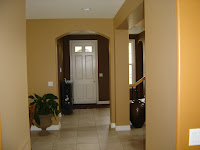

Bath Makeover Before & After
It is true one of the most important makeovers you can do to your home is to makeover or remodel the bath(s) and kitchen. If you are new to remodeling it can seem daunting so I reccomend start small and redo a bathroom. This way you will get a sense of what it is like to have construction going on in your home on a much smaller scale.
Also, in most cases a bath can be done much quicker and with a much smaller budget. You will also learn if you like or are pleased with whatever workmen or crafts people used on the project and if you would be happy using them on another home improvement project.
To begin, think of the look you want, search magazines. Create your budget and allow a little extra for the unexpected. Replace tile if it is old, cracked or extremely dated. Ceramic tile is most durable and requires less upkeep than natural stone. Replace the vanity and fixtures.....today you can even buy prefab vanities that look great, save money and cut back on the wait for a custom cabinet. Can you do without your medicine cabinet? If so get a vanity with more storage and add a great new decorative mirror. Coordinate the fixtures.....brushed nickel, bronze/oil rubbed copper are great choices today. When you have chosen the look you want it is best to purchase/obtain all your fixtures ahead of time, so that it will be ready to be installed when the work begins and you are not running around still shopping in the middle of the project. Finally, decorate! Replace the linen, art and any old plants or florals. Enjoy!!!!

















